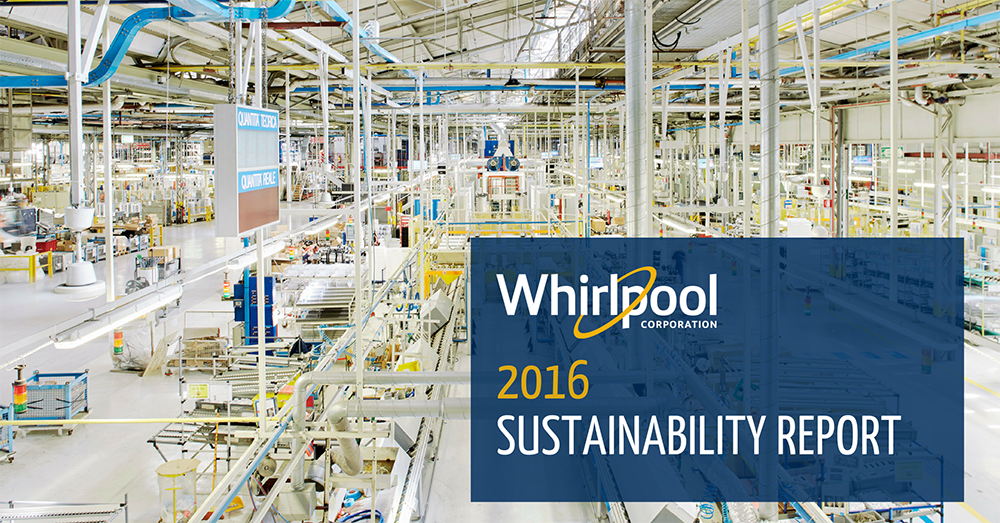At a global level, in the 2-year period 2014-2016, Whirlpool cut its consumption of energy by 21% and water by 33%, thus outperforming the initial objective of saving 15% by 2020.
Last year, Whirlpool employees worldwide donated 340,000 hours of voluntary work to over 300 organizations.

Whirlpool Corporation continues to be actively committed to guaranteeing a better world for current and future generations, and the results of this commitment were published today in its 2016 Sustainability Report.
In line with Whirlpool’s sustainability journey and the Global Reporting Initiative’s G4 guidelines, Whirlpool’s 2016 Sustainability Report focuses on objectives and programmes designed to achieve a positive impact on the Company’s business and products, and in all the geographical regions where it operates.
Whirlpool confirmed the four performance improving objectives it set in 2014 and will work in 2017 to set new energy and water saving targets, where it has already achieved its initial goals:
- complete transparency of 90% of materials in new products by 2020;
- 15% less water by 2020 compared to 2014 values;
- 15% less energy by 2020 compared to 2014 values;
- zero waste to landfill by 2022.
Whirlpool and environmental sustainability in processes and products
Whirlpool’s environmental impact performance since 2014, on a global level, can be summed up as follows:
- energy consumption down 21%
- water consumption down 33%
- CO² emissions down 18%
- waste produced down 32%
In the EMEA region (Europe, Middle East and Africa) a series of activities to cut energy, water and heat consumption in various plants were implemented.
At Cassinetta di Biandronno (Varese) Whirlpool renewed its lighting system by replacing 650 sodium lamps with 400 LED lights, with an energy saving of 64% in an area of 55,000 sqm. The Naples and Siena sites, on the other hand, introduced an integrated management system covering energy, the environment and health & safety that has obtained ISO 50001, ISO 14001 and OHSAS 18001 international certifications.
Whirlpool and social commitment in the communities where it operates
Whirlpool’s social responsibility initiatives focus on the areas in which it actually operates and where its employees play a vital role in making such projects succeed. Its results in 2016 were as follows:
- 1 employee out of 3 did voluntary work;
- 340,000 hours of voluntary work;
- over 300 organizations worldwide benefitted from voluntary work and donations.
To improve its social sustainability and integrate CSR activities into its business, Whirlpool EMEA recently launched the new Corporate Giving Strategy, which concentrates the Company’s social investments in the fields of food safety and responsible consumption, housing and the promotion of young people’s employability.
In Italy, Whirlpool EMEA continues to work with the Italian Red Cross to help manage the migration crisis in Europe and provide aid for communities hit by the earthquake in central Italy. The “White Goods for Red Cross” project provided equipment for Red Cross reception centres in Rome, Milan and Ventimiglia and a home appliance for each of the other 33 reception centres throughout Italy. In the three main reception centres in 2016, aid was given to over 8,000 people, whereas on the earthquake front over 90% of Whirlpool’s employees in Italy made an economic contribution to help the Red Cross build the first ever mobile laundry in Italy for displaced people.
Whirlpool EMEA also continues to support Habitat for Humanity®, a global programme. In 2016 it supported projects in South Africa and Hungary through donations and voluntary work.
Check out the 2016 Sustainability Report.